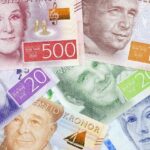Australian dollar surged against the Japanese yen on trading Monday, after the vote in the Crimean peninsula and while Westpac Banking Corp. reduced its forecast that the Reserve Bank of Australia (RBA) may cut borrowing costs further this year.
AUD/JPY touched a session high at 92.44 at 9:05 GMT, after which consolidation followed at 92.34, soaring 0.91% for the day. Last week the pair lost 2.31%. Support was likely to be received at March 14th low, 91.31, while resistance was to be encountered at March 13th high, 93.41. On March 7th the pair touched 94.48, which has been the highest level since November 20th.
Westpac reduced its forecast for additional cuts in interest rates by RBA this year. Bill Evans, a chief economist at Westpac Banking Corp., projected a possible first increase in borrowing costs by the Australian central bank during the third quarter of 2015.
“The forecast is now for flat rates throughout 2014,” Evans wrote in a research note today, cited by Bloomberg News. Improving data regarding nations employment, consumer spending and business confidence will combine “to exclude a sufficiently strong case to cut rates”.
The yield on Australian benchmark 10-year government bonds climbed one basis point, or 0.01 percentage point, to reach 4.05%. The yield on nations 3-year bonds rose three basis points to 2.91%.
In addition, the preliminary results from Crimea’s referendum yesterday revealed that 96% of voters in the peninsula supported leaving Ukraine and joining Russia. The Ukrainian government, the European Union and the United States consider this vote as illegitimate, while the Russian Federation said that it “fully met international norms.”
Russian Micex Index of shares extended its daily gain to 2.7%. It fell 7.6% last week.





